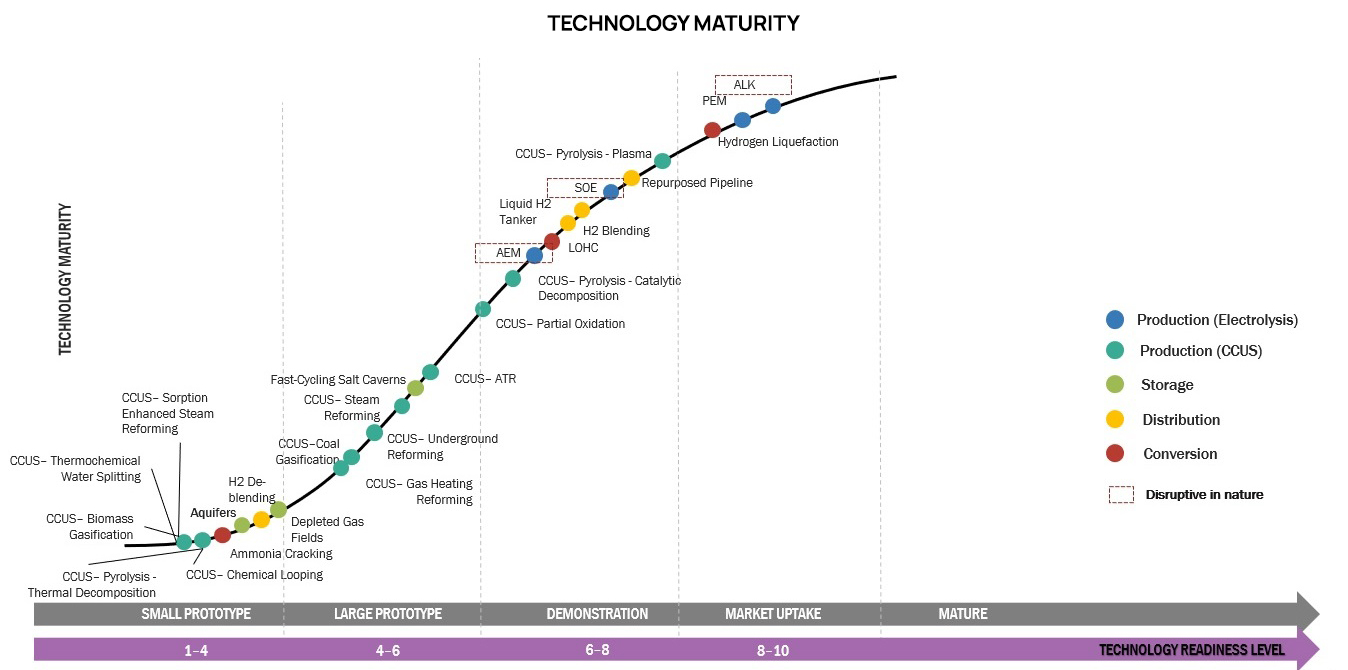Hydrogen Supply Chain:
In the quest for sustainable and clean energy solutions, hydrogen has emerged as a promising contender, offering a versatile and environmentally friendly alternative to traditional fossil fuels. As the world shifts towards a low-carbon future, understanding the hydrogen supply chain becomes crucial. This article explores the intricacies of the hydrogen supply chain, from production to end-use, highlighting its potential to revolutionize the global energy landscape.
1. Hydrogen Production: The Starting Point
The hydrogen supply chain begins with production, where hydrogen is generated through various methods, each with its own set of advantages and challenges.
- Electrolysis: This method involves using electricity to split water into hydrogen and oxygen. When powered by renewable sources such as wind or solar energy, electrolysis produces “green hydrogen” with zero carbon emissions.
- Steam Methane Reforming (SMR): Currently the most common method, SMR extracts hydrogen from natural gas. While cost-effective, it produces carbon emissions, unless coupled with carbon capture and storage (CCS) technologies.
- Biomass Gasification: Biomass materials can also be used to produce hydrogen through gasification, offering a carbon-neutral alternative.
2. Transportation: Moving Hydrogen Across Borders
Once produced, transporting hydrogen efficiently and safely is a significant challenge. Hydrogen can be transported in several forms:
- Pipeline Transportation: Like natural gas, hydrogen can be transported through pipelines. However, this method requires a dedicated pipeline infrastructure, limiting its feasibility.
- Liquid Hydrogen: Hydrogen can be cooled to extremely low temperatures to become a liquid, making it more compact for transportation and storage.
- High-Pressure Gas Tubes: Compressing hydrogen into high-pressure tubes is another transportation method, suitable for shorter distances.
3. Storage: Overcoming the Hydrogen Conundrum
Storage is a critical component of the hydrogen supply chain, addressing issues of intermittency in production and demand. Various storage methods include:
- Salt Caverns: Underground salt caverns can store large quantities of hydrogen, providing a cost-effective and scalable solution.
- Hydrogen Tanks: High-pressure tanks are used for storing compressed hydrogen, especially in industries with intermittent demand.
- Liquid Hydrogen Tanks: Liquid hydrogen can be stored in cryogenic tanks, maintaining a low temperature to prevent evaporation.
5. End-Use Applications: Powering a Sustainable Future
Hydrogen’s versatility makes it suitable for various end-use applications, including:
- Fuel Cells: Hydrogen fuel cells generate electricity by combining hydrogen and oxygen, emitting only water vapor as a byproduct. This technology is gaining traction in transportation, especially in fuel cell vehicles.
- Industrial Processes: Hydrogen is a vital feedstock for industries like chemicals, refining, and steel production, offering a cleaner alternative to conventional processes.
- Power Generation: Hydrogen can be used to generate electricity through combustion, providing a reliable and low-emission power source.
Conclusion
The hydrogen supply chain is a complex web of processes and technologies, each playing a crucial role in realizing the potential of hydrogen as a clean and sustainable energy carrier. As advancements in technology, policy support, and investments continue, the hydrogen supply chain is poised to reshape the global energy landscape, offering a green alternative that addresses the challenges of climate change and energy security.
DOWNLOAD- https://www.marketsandmarkets.com/industry-practice/RequestForm.asp
Key Stakeholders and Processes Involved in Hydrogen Supply Chain:
The hydrogen supply chain involves various stakeholders and processes working together to ensure the efficient production, storage, transportation, and distribution of hydrogen. Here are the key stakeholders and processes involved in the hydrogen supply chain:
- Regulatory Bodies and Government Agencies: Regulatory bodies and government agencies play a crucial role in the hydrogen supply chain. They establish regulations, safety standards, and policies related to hydrogen production, transportation, storage, and use. They also provide incentives, grants, and support to promote the development and deployment of hydrogen technologies.
- Research Institutions and Technology Developers: Research institutions and technology developers contribute to the hydrogen supply chain by conducting research, development, and innovation activities. They explore new production methods, storage technologies, transportation solutions, and efficiency improvement techniques. Their work helps advance the overall performance and cost-effectiveness of the hydrogen supply chain.
- Financial Institutions and Investors: Financial institutions and investors provide funding, capital, and financial support for the development and expansion of the hydrogen supply chain. They play a crucial role in financing infrastructure projects, production facilities, storage terminals, and transportation networks. Their involvement is essential for scaling up the hydrogen industry.
- Collaborative Platforms and Industry Associations: Collaborative platforms and industry associations bring together stakeholders from different sectors of the hydrogen supply chain. They facilitate knowledge sharing, promote collaboration, and advocate for supportive policies and regulations. These platforms contribute to the overall growth and development of the hydrogen industry.
Hydrogen Demand Forecast:
In the pursuit of a cleaner, more sustainable energy future, hydrogen has emerged as a beacon of hope. This article delves into the factors shaping the hydrogen demand forecast and explores the pivotal role hydrogen is poised to play in the global energy transition.
1. The Green Revolution: A Catalyst for Hydrogen Demand
The global push towards decarbonization and the transition to renewable energy sources is a driving force behind the rising demand for hydrogen.
2. Transportation Sector: Fueling the Future
One of the primary drivers of hydrogen demand is the transportation sector’s shift towards cleaner alternatives. Hydrogen fuel cells, powering everything from cars to buses and trains, offer a zero-emission solution.
3. Industrial Applications: Greening Traditional Processes
Industries such as chemicals, refining, and steel production are turning to hydrogen as a cleaner alternative to traditional processes. Green hydrogen, produced through electrolysis using renewable energy sources, is gaining traction as a sustainable feedstock.
4. Power Generation: A Renewable Boost
Hydrogen’s potential in power generation is multifaceted. As a clean-burning fuel, hydrogen can be used in combustion turbines, providing a reliable and low-emission source of electricity.
5. Policy and Regulations: Shaping the Landscape
Government policies and regulations are pivotal in shaping the trajectory of hydrogen demand. Many countries are introducing incentives, subsidies, and regulatory frameworks to promote the production and use of hydrogen.
READ MORE- https://www.marketsandmarkets.com/industry-practice/hydrogen/hydrogen-supply-chain-optimization


